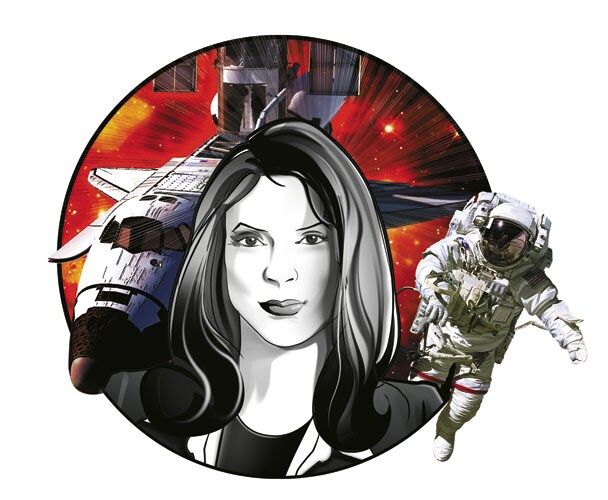
Is There a 100-Mile-High Club?
They’re one of the most exclusive groups on earth: The ones who have seen our planet as a whole. Sunita Williams, a Nasa astronaut of part-Indian descent, what it feels like
What is take-off like?
There’s something called “the twang”, when the main engines light, and you are not over your centre of gravity, six seconds before lift off. It’s invigorating and fun; you feel like you are at the top of a rollercoaster. It’s first bumpy then smooth, and then you feel acceleration towards thinner parts of the atmosphere. After eight-and-a-half minutes, your arms start floating.
How’s the food?
Pretty good! It’s primarily Russian and American: Lasagna, sweet and sour pork, meat and potatoes. You get to select your own bonus food. I took Indian food because my dad is Indian, and Slovenian sausages because my mom’s Slovenian. Anything different and spicy is good — the food is generally bland. We can’t use salt except liquid salt, garlic paste, horseradish paste — anything in liquid form.
How fast is the net connection?
There is none. We get and send email, but it’s sent up in packets three times a day, when we synchronise with Houston.
Is there a 100-mile-high club?
Not that I know of. At least I’m not part of it yet (laughs). That whole concept is not tried; it would be pretty hard to do!
How do you sleep weightless?
You have a sleeping bag so you are not all over the place. It keeps your arms and legs inside. On the station, it’s different than the shuttle and you each have your own sleep station. What is troublesome is you don’t feel like you have covers on you, or a pillow. But you adapt, and you are okay after a month.
What was the most interesting day-to-day thing you did?
The fun stuff is to switch your frame of reference. If you’re cleaning a house you have the house and the floor. In the space station, you can flip upside down, have the floor as the ceiling, or treat the window like the glass bottom of a boat!
How about health problems?
There isn’t always a doctor on the crew. In the second part of my mission I was the doctor. We take courses in emergency medicine, and we have connection with the ground, where there is a flight surgeon on counsel in Houston. The Soyuz spacecraft attached to the station is a lifeboat. Radiation and bone loss are dangers. You leach bone density. We try to maintain it with fitness exercises up there: A treadmill, a harness connected to a bungee-type system, a resistive exercise device, like lifting weights.
What if a team member dies?
There is no manual for that. I think they would want the person to come home.
How far do you have to go to see the curvature of the Earth?
100 miles. We are up at 250 miles.
How does it feel?
You feel so far but so close, like you can’t come home, disconnected from hustle and bustle. I remember seeing big clouds over the Gulf of Mexico and thinking, what I wouldn’t give to be rained on, to have breeze. You even miss the bad smells on Earth. There is a spiritual feeling: You’re privileged just to have this view. You see the planet differently, as a whole, the amazing colours, the animals and plants and people not separated by anything.
(Coordinated by Elizabeth Flock)
Our next insider is a bookie. So, if you have questions about the betting life, email us (ask.forbesindia@network18online.com) or write to Ask the Insider at our office address. We also welcome suggestions on future “insiders” you’d like to see.
(This story appears in the 30 November, -0001 issue of Forbes India. To visit our Archives, click here.)





